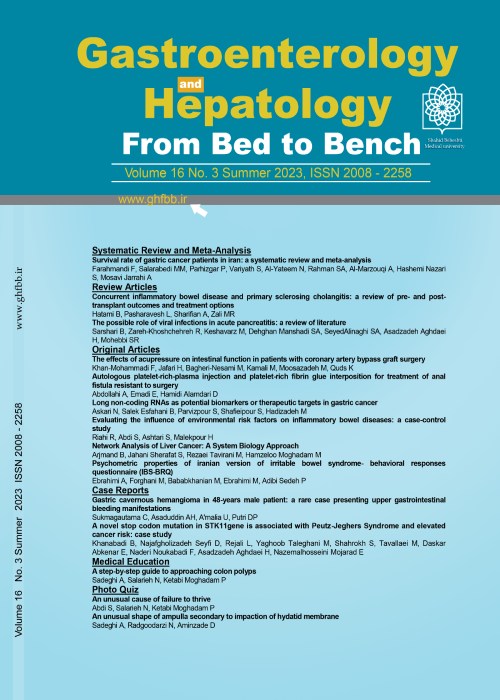Comparison of hepatic steatosis index as noninvasive diagnostic tool and liver ultrasound for non-alcoholic steatosis in the adult population
This study aimed to evaluate hepatic steatosis index (HSI) as a non-invasive tool in diagnosing and predicting nonalcoholic fatty liver disease (NAFLD) and to compare it with abdominal ultrasound as the gold standard tool.
NAFLD is a general term attributed to the deposition of adipose tissue in the liver leading to hepatitis, fibrosis, cirrhosis, and also hepatocellular carcinoma (HCC). Rapid and valid screening can remarkably prevent the progression of this disease.
A total of 464 people were included in the present study based on inclusion criteria. Patients were evaluated for body mass index (BMI), AST, ALT, and ALP indices. The liver echogenicity of patients was evaluated by abdominal ultrasound technique.
The results showed that out of 464 people included in the study, 32.33% represented fatty liver. It was found that 79.1% of patients were female. There was no significant difference between the two groupsin terms of age. Furthermore, it was found that ALT, AST, and ALP levels were significantly increased in the two groups of patients compared to the controlgroup. It was determined that out of 150 patients, 75.3% were grade I and 24.7% were grade II NAFLDcases; no grade III cases were observed. The mean HSI for the NAFLD-group was 35.51±5.72 and for the NAFLD+ group was 42.84±5.70, a significant difference. The receiver operating characteristic (ROC) curve also showed that the area under the curve (AUC) of HSI was 0.833 (95% CI, 0.796-0.870) for detecting NAFLDpatients. At the cutoff point of > 36.0, the sensitivity, specificity, negative predictive value (NPV), and positive predictive value (PPV) were 88.7% (95% CI, 82.5–92.5), 63.4% (95% CI, 57.9–68.5), 92.1%, and 53.6%, respectively. Pearson correlation showed a direct and significant correlation between ultrasound data and HSI values.
Overall, the present study results showed that HSI as a non-invasive and non-imaging tool can diagnose NAFLD.
- حق عضویت دریافتی صرف حمایت از نشریات عضو و نگهداری، تکمیل و توسعه مگیران میشود.
- پرداخت حق اشتراک و دانلود مقالات اجازه بازنشر آن در سایر رسانههای چاپی و دیجیتال را به کاربر نمیدهد.


